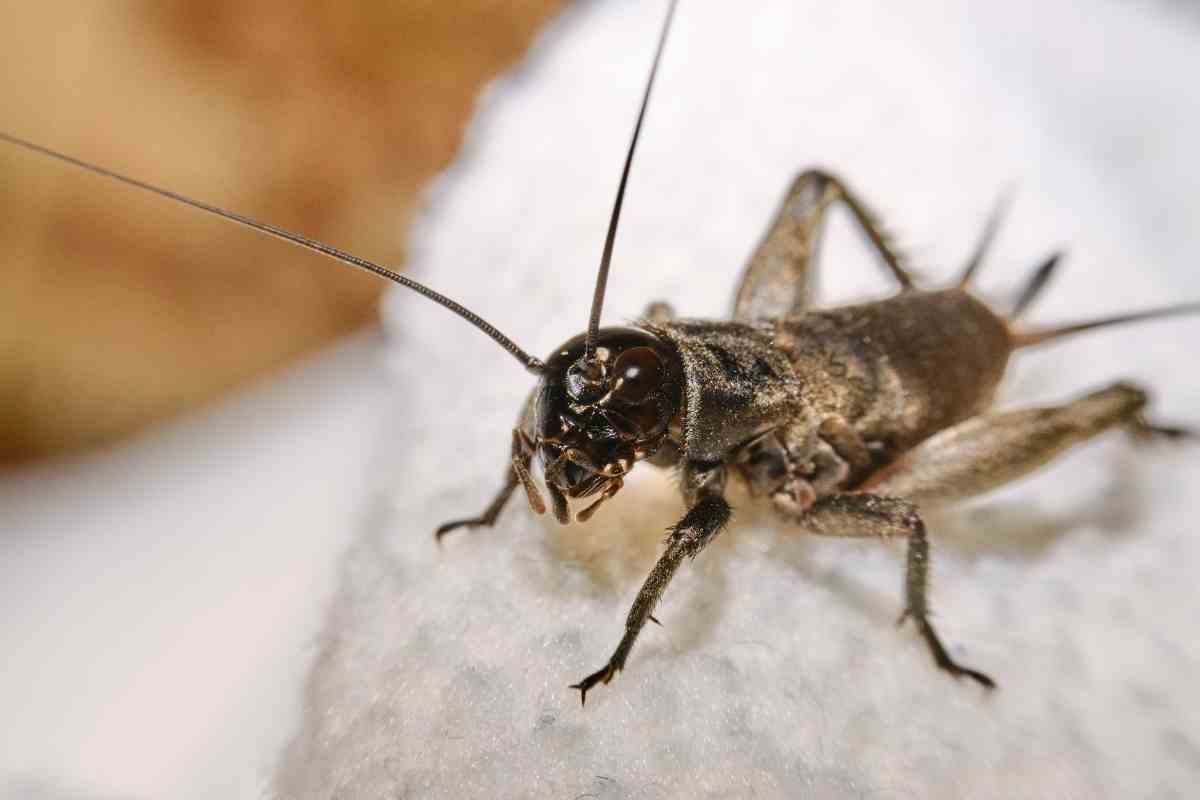Although crickets are famous for their loud chirping caused by rubbing wings to attract potential mates, it isn’t the only problem they cause.
They damage your clothes, carpets, furniture, and anything with fabric.
It can be challenging to eliminate crickets because they fly. They also like hiding in hard-to-reach areas, such as the roof or inside the attic.
Here are useful tips on how to deal with cricket infestations.
Why Crickets Attack Your Home
Like centipedes and millipedes, crickets invade your home occasionally.
However, they prefer outdoor living and don’t thrive or breed indoors. This means home attacks are rare.
However, crickets will invade your home to escape harsh weather conditions outside.
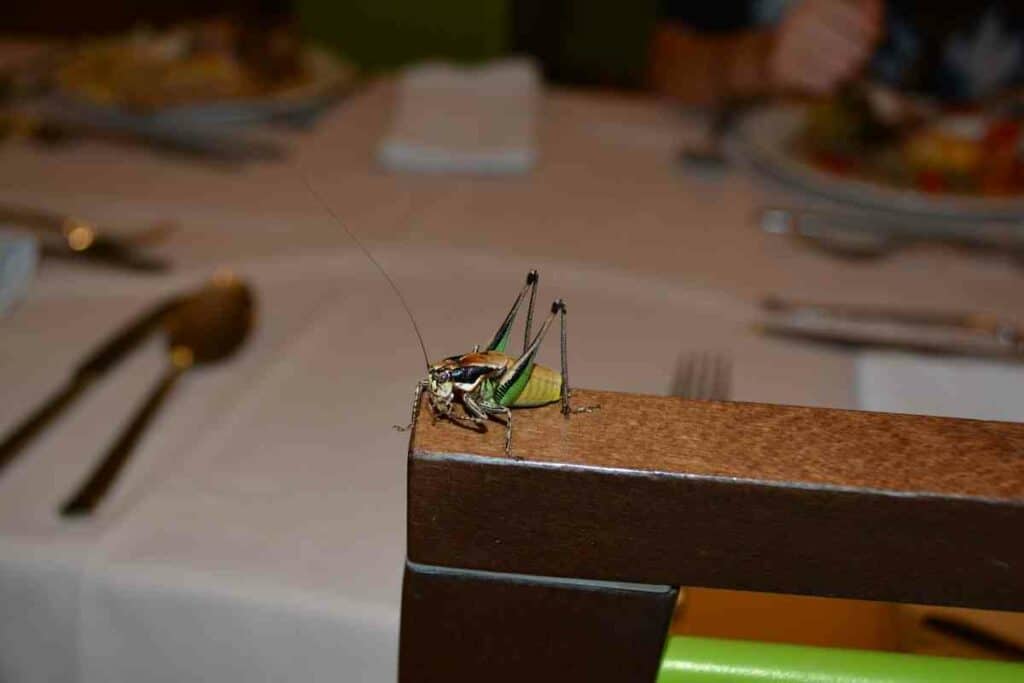
They will sneak indoors through doors, windows, and other openings if it gets too cold or hot. Sometimes, they enter through your roof vents into the attic.
It’s worth noting that crickets love arm environments. So when they enter your home, they’ll likely settle in the kitchen.
Inside Your Roof – They’ll stay inside the chimney or near the AC for added warmth. Once inside, they can hide in cracks or the ceiling but will escape to the outdoors when conditions improve.
What are the Signs of Cricket Infestation?
The most apparent sign of cricket infestation is seeing the insects.
Remember, these creatures go indoors to escape the cold outside and mostly like staying in warm, damp areas. Unfortunately, bright lights can also attract crickets.
Besides sighting them, you can hear these annoying creatures. Crickets are nocturnal and are loudest after sunset. They are so loud they can affect your sleep.
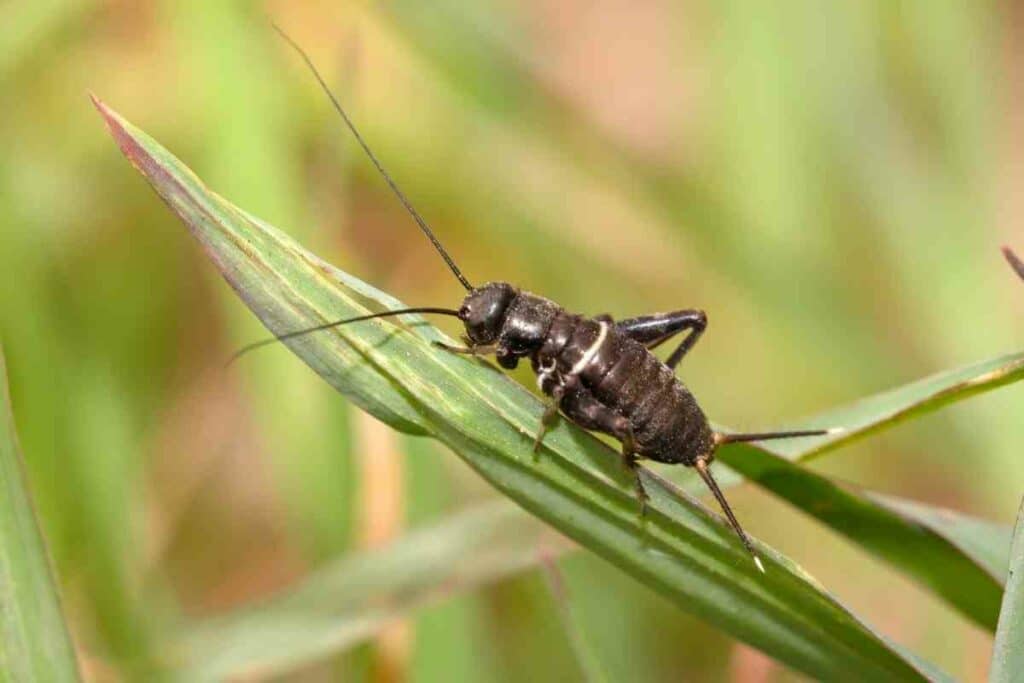
Another sign of cricket infestation is chewed or damaged fabric.
You can spot cricket damage by using a magnifying glass.
However, it might not be easy to spot them with the naked eye, as the mandible marks are less than a millimeter wide.
What Do House Crickets Look Like?
There are different cricket types, but the ones that invade your home are called house crickets.
Although you can find them outside, house crickets differ from field crickets.
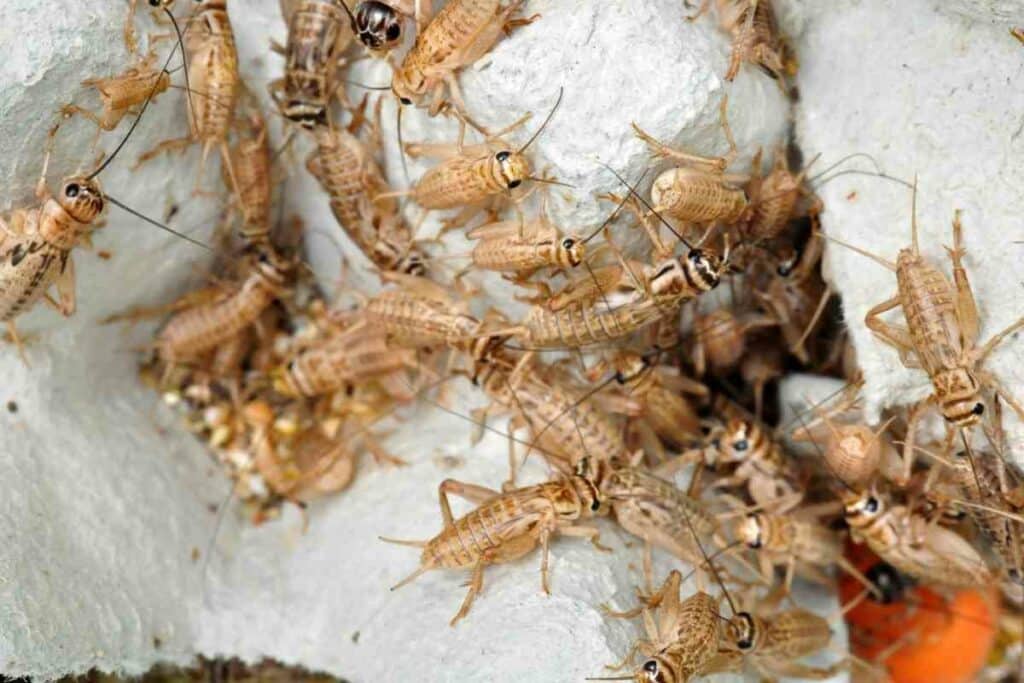
They have distinct appearances, behavior, and diet. For example, their antennae resemble threads and are longer than the body.
Overall, house insects look like small cockroaches since their wings lie flat on the body.
However, like all cricket, they have strong hind limbs to improve jumping reach.
What do Crickets Eat?
As mentioned above, house crickets like eating fabrics.
They eat both natural and synthetic materials.
So if your home is under attack, you might spot damage to carpets, clothing, curtains, furniture, and upholstery.
However, house crickets’ food isn’t limited to fabrics. Sometimes, they can hunt live insects and forage for plants.
While Inside Your Home – They can target your indoor garden, provided you don’t grow unfavorable plants. They can also feed on other crickets.
5 Natural Methods of Eliminating House Crickets
If your home is under attack from crickets, here are 5 useful tips for getting rid of them.
1. Use Molasses
Molasses is useful in making cakes, cookies, and other homemade pastries.
It’s also used in making animal feed. However, many people don’t know it’s an effective bait for crickets.

Add four tablespoons of molasses to a jar of water. Repeat this until you have enough jars.
Then, place the containers in strategic areas around your house. The scent of molasses lures crickets into jumping inside, where they drown.
2. Remove the Eggs
Crickets can lay many eggs inside your roof, resulting in the infestation getting out of control.
The best way to prevent an uncontrollable invasion is to use a high-efficiency particulate air filter vacuum cleaner.
These powerful machines pull eggs from hard-to-reach areas, such as carpets and roof cracks.
After Vacuuming – Throw away the contents in a sealed plastic bag. Most sprays used to kill crickets also destroy eggs.
So when spraying, focus on potential egg-laying areas like baseboards, trims, and wall cracks.
3. Use Diatomaceous Earth
Diatomaceous earth is a white powder made using algae bone remains.
When crickets touch this powder, it dehydrates and eventually kills them.
This chemical is readily available in garden stores and doesn’t harm people and pets.
Sprinkle the powder in affected areas, then wait for results.
Ensure you get food-grade diatomaceous earth and keep it away from moisture. Dampness renders diatomaceous earth ineffective.
4. Grow Nitrogen-fixing Plants
As mentioned, crickets can target your indoor plants if they find them favorable.

To prevent this, grow nitrogen-fixing plants.
Such plants absorb nitrogen from the atmosphere and store it in their roots.
Examples include:
- beans
- peas
- and other leguminous plants
Alternatively, you can drive crickets away by growing plants with strong, irritant smells. These include clover, cilantro, garlic, onions, sweet peas, and sweet potatoes.
5. Use Natural Predators
Crickets are an easy target for other animals, mostly because they are small.
However, domestic pets like cats and dogs can help keep these annoying insects away from your home using their instincts.
However, cats and dogs might not be adequate when dealing with an extensive cricket infestation.
In such cases, place a bird feeder in your yard to attract birds, which will help you to deal with the cricket menace.
It’s also advisable to let lizards and spiders live because they will eat the crickets.
How to Prevent Cricket Attacks – Top 5 Ways
When dealing with insects, the best way to avoid damage is to employ prevention measures.
Here are 5 proven tips for preventing cricket infestation.
1. Use Natural Repellents
To make a natural cricket repellent, mix hot chilis or chili powder with two cups of water and add a little dish soap.
Spill the solution into a spray bottle and squeeze it over potential cricket habitats. These include cracks, openings, and overgrown vegetation in your yard.
When Spraying – Wear protective gear because the mixture can irritate your eyes and other open parts.
The scent and irritation keep the crickets away. You can add crushed garlic to the mix to boost its potency.
2. Close Entry Points
Keeping your home free of crickets starts by sealing out potential entry points.
It’s especially crucial to close the gaps between the floor and the bottom of the doors.
Also, don’t forget to attend to the garage, as the warmth and dampness provide ideal conditions that attract insects.
Cracks, holes, ripped windows, and loose doors invite crickets into your home.
Ensure you block them using:
- caulks
- expanding foam
- patching compounds
- rubber trims
- and sealants
Sealing these areas reduces the risk of cricket infestations.
3. Manage Dampness
House and field crickets are attracted to moisture.
Therefore, eliminating water is an effective way of keeping them from your home.
If you notice the insects inside your roof, it probably means there’s a leak in your plumbing or ventilation system.

It’s vital to reduce damp areas in and around your house. Repair leaky taps and water appliances, such as refrigerators and dispensers.
Ensure your attic and basement have adequate ventilation to prevent moisture build-up. Also, purchase a reliable dehumidifier to reduce dampness on hot days.
4. Change Your Lights
Bright lights attract crickets at night despite nesting and laying eggs in dark environments.
If you use strong lamps to illuminate your house, you might lure them into your home.
Instead of using bright bulbs, consider switching to LED or low-illumination ‘bug lights,’ as these don’t attract crickets.
You can also draw your curtains at night so the bright glow doesn’t lure crickets toward your house.
Alternatively – You can install motion-sensing lights. If you must keep your yard lit overnight, place the security lights far from the house.
5. Keep Your Compound Clean
Lastly, it’s essential to keep your compound clean.
This helps to reduce the risk of cricket infestations.
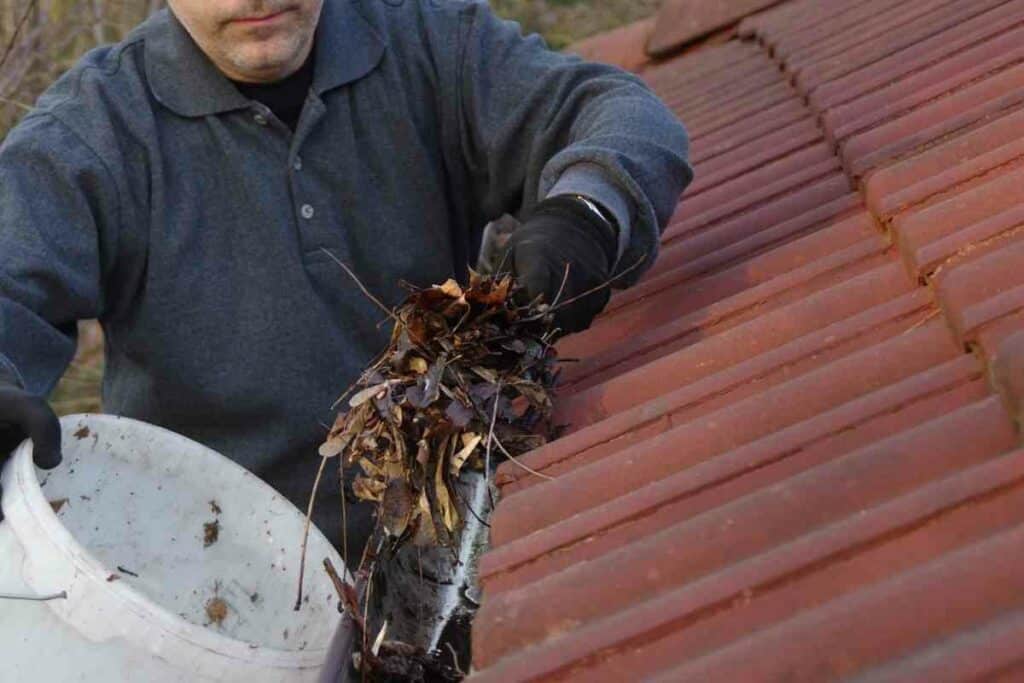
Mow your grass, so it never exceeds two inches tall, and weed your flower beds.
Prune trees and shrubs, especially those next to your doors, windows, and other potential entry points.
Store wood piles at least twenty feet from your house, and don’t forget to clean your gutters, as they host insects and other critters.
FAQs About Crickets
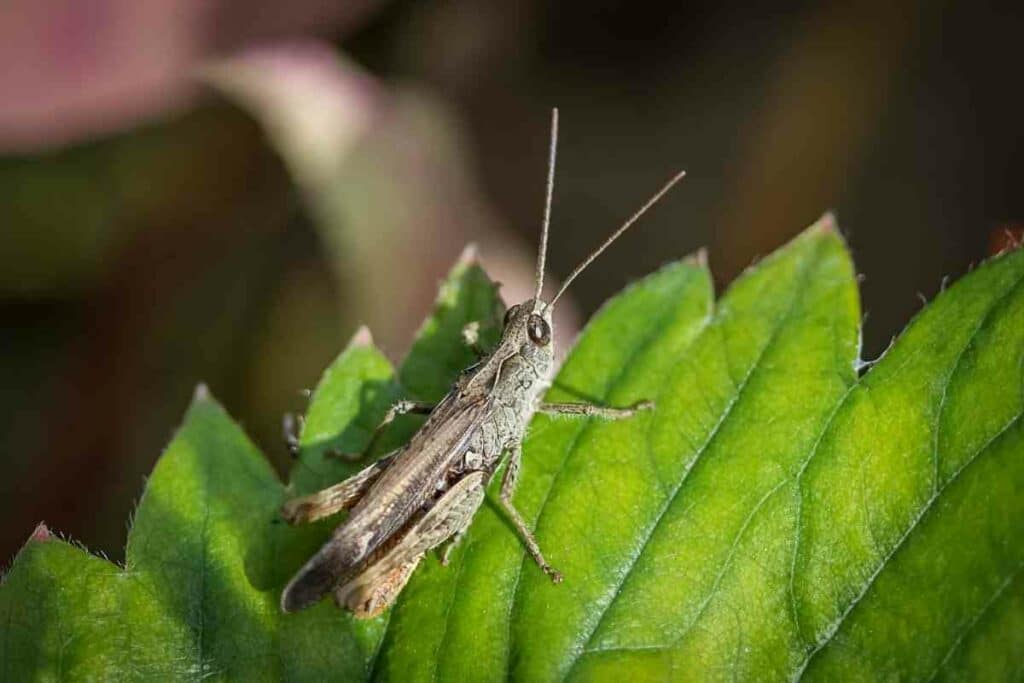
Here are frequently asked questions about crickets.
1. How long do crickets live in the house?
Crickets live for 7 to 10 weeks after reaching adulthood. After this, they die of old age. Cold temperatures also hurt and can kill mature crickets. Adult insects can survive without eating or drinking water for two weeks.
2. Are crickets in your house good luck?
In some parts of Asia, having crickets on the hearth is good luck. Native Americans also believe these insects attract good fortune and prevent people from mimicking them out of respect.
3. What do house crickets look like?
Adult house crickets are yellowish-brown, with three crossbands on the head. They have antennae longer than their body, ranging from ¾ to 7/8 inches. Nymphs are wingless.
Wrapping Up
From causing sleepless nights to damaging your fabric, crickets can be unbearable.
However, you can keep them off your premises by ensuring your yard is clean, closing potential entry points, changing your lights, and using natural repellents.
If they are already inside, use the elimination methods above, or call an exterminator.
